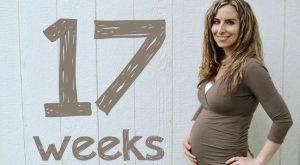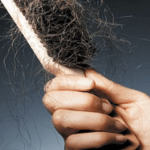If you’re struggling with chronic yeast infections, digestive issues, fatigue, brain fog, or skin flare-ups, Candida overgrowth could be to blame.
And while there’s no magic pill to fix it overnight, adopting a strict Candida diet is one of the most powerful and natural ways to starve the yeast, restore gut balance, and reclaim your health.
In this guide, you’ll learn:
Also Read
- What Candida is and how it impacts the body
- Why diet plays a major role in treatment
- Foods to eat and avoid
- Why a full-body approach is key to long-term relief
Let’s break it down.
What Is Candida Overgrowth?
Candida is a genus of yeast that lives in our bodies – particularly in warm, moist areas like the mouth, gut, skin, and vaginal canal.
The most common species, Candida albicans, usually exists peacefully in balance with our “good bacteria.”
But when this balance is disrupted (due to diet, stress, or antibiotics), Candida can multiply uncontrollably, leading to an infection known as Candidiasis.
Common Symptoms of Candida Overgrowth
Candida symptoms vary depending on where the yeast spreads, but common signs include:
Digestive:
- Bloating and gas
- Constipation or diarrhea
- Sugar cravings
- White coating on the tongue
Reproductive:
- Recurring vaginal yeast infections
- Itching or burning
- Thick, white discharge
Cognitive & Emotional:
- Brain fog
- Fatigue
- Mood swings or irritability
Skin & Body:
- Rashes in skin folds
- Nail fungus
- Athlete’s foot
- Oral thrush
What Causes Candida Overgrowth?
Candida can overgrow when the “good” bacteria in your body are reduced or when the internal environment becomes yeast-friendly.
Top Triggers Include:
- Overuse of antibiotics or steroids
- High-sugar or high-carb diets
- Alcohol consumption
- Chronic stress
- Diabetes or blood sugar imbalances
- Hormonal changes (e.g. pregnancy, birth control pills)
- Weakened immune system
- Poor gut health
Why the Candida Diet Works
The Candida diet is designed to:
- Starve the yeast by cutting off its fuel source (sugar and refined carbs)
- Strengthen your immune system
- Rebuild your gut microbiome by supporting good bacteria
- Reduce inflammation and improve digestion
Think of it as creating an environment where Candida can’t thrive – while nourishing your body to recover naturally.
Foods to Eat on a Candida Diet
Focus on low-sugar, anti-inflammatory, and nutrient-rich foods that heal the gut and support immunity.
Non-Starchy Vegetables:
- Leafy greens (spinach, kale, arugula)
- Zucchini, cucumbers, broccoli, cauliflower, cabbage
- Bell peppers, asparagus, celery
Lean Proteins:
- Organic poultry and grass-fed meat
- Wild-caught fish (salmon, sardines, mackerel)
- Organic eggs
Healthy Fats:
- Coconut oil (natural antifungal)
- Extra virgin olive oil
- Avocados
- Ghee or grass-fed butter (in moderation)
Low-Sugar Fruits (in moderation):
- Green apples
- Lemons and limes
- Grapefruit
- Berries (limited)
Natural Antifungal Foods:
- Garlic
- Ginger
- Turmeric
- Apple cider vinegar (in small amounts)
Other Essentials:
- Unsweetened almond or coconut milk
- Herbal teas (peppermint, chamomile, ginger)
- Fermented foods (sauerkraut, kimchi, kefir – sugar-free)
- Non-gluten grains (quinoa, millet, buckwheat)
Foods to Avoid on a Candida Diet
These foods feed Candida and worsen symptoms.
Sugars:
- Table sugar
- Honey, maple syrup, agave
- Fruit juices and dried fruits
- Artificial sweeteners (aspartame, sucralose)
Refined Carbohydrates:
- White bread
- Pasta, pizza, baked goods
- Crackers, chips, cereals
High-Starch Veggies:
- Potatoes
- Sweet potatoes
- Corn, beets, carrots
Moldy or Fermented Foods (temporarily avoid):
- Aged cheese
- Mushrooms
- Vinegar (except apple cider vinegar)
- Soy sauce and tamari
Beverages to Avoid:
- Alcohol (especially beer and wine)
- Coffee and caffeinated drinks
- Sugary sodas and energy drinks
A Holistic Approach: Diet Isn’t Enough
While diet is essential, Candida is a whole-body issue, and long-term success depends on addressing multiple root causes.
Include in Your Candida Healing Plan:
- Probiotics – replenish beneficial bacteria
- Natural antifungals – like oregano oil, caprylic acid, garlic
- Stress reduction – yoga, meditation, sleep hygiene
- Detox support – liver and lymphatic health
- Hormonal balance – especially for women with recurring vaginal infections
- Gut healing – consider bone broth, L-glutamine, and digestive enzymes
You’re not just treating symptoms – you’re restoring balance across your entire system.
How Long Should You Follow the Candida Diet?
There’s no one-size-fits-all answer. Most people follow a strict phase for 3–6 weeks, then slowly reintroduce foods. In more severe cases, a longer period (8–12 weeks) may be necessary.
Listen to your body and work with a holistic practitioner to guide your journey.
Reintroducing Foods After the Candida Diet
Once symptoms are gone and your gut is stronger, start reintroducing restricted foods slowly:
- Add one new food every few days
- Watch for symptoms like bloating, fatigue, or itching
- Continue prioritizing gut-healing foods
The Candida diet isn’t just about saying “no” to sugar. It’s about saying yes to healing, yes to energy, and yes to a stronger immune system.
While a strict anti-yeast diet is crucial for recovery, the real power lies in combining it with lifestyle shifts, natural remedies, and stress reduction.
Be patient with the process – and be proud of the steps you’re taking toward better health.














